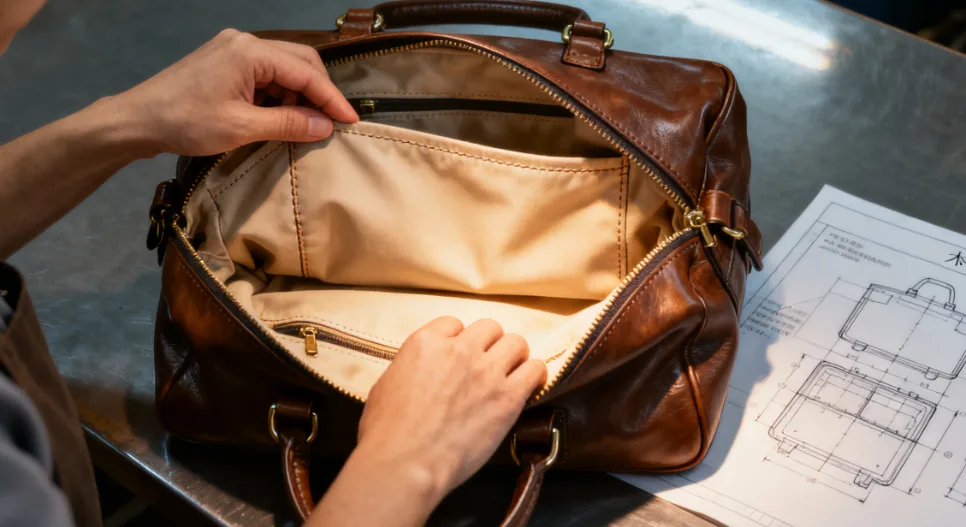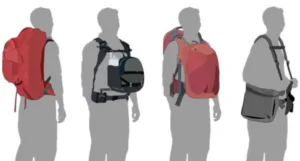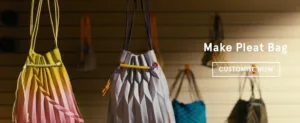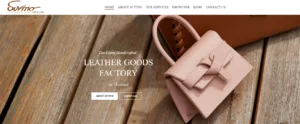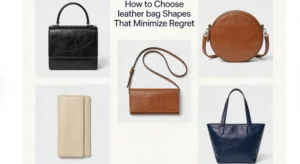In the world of leather bag manufacturing, the sampling process is far more than a preliminary step — it is the foundation of every successful production. For brands collaborating with an OEM leather bag manufacturer, a well-executed sample determines the quality benchmark for mass production, ensuring that every stitch, edge, and hardware detail meets brand expectations.
At Sunteam, we understand that creating a sample isn’t just about “making one bag.” It’s a collaborative process where craftsmanship and precision come together to reflect the essence of the final product — whether it’s a leather tote bag, leather crossbody bag, leather shoulder bag, or a leather duffle bag. Each prototype we produce is carefully inspected to ensure consistency in material, structure, and finish, setting a reliable foundation for scaling up.
This behind-the-scenes look takes you into our factory’s sample department, where every leather bag begins its journey. Through a series of seven key quality checkpoints, we’ll show you how Sunteam turns raw materials into finely crafted pieces that embody durability, style, and attention to detail.
Contents
- 1 The Importance of Quality Inspection Before Mass Leather Bag Production
- 2 Quality Checkpoint 1 – Leather Material Selection
- 3 Quality Checkpoint 2 – Pattern Cutting Precision
- 4 Quality Checkpoint 3 – Stitching and Thread Quality
- 5 Quality Checkpoint 4 – Edge Painting and Finishing
- 6 Quality Checkpoint 5 – Hardware and Accessories
- 7 Quality Checkpoint 6 – Lining and Interior Construction
- 8 Quality Checkpoint 7 – Final Inspection and Packaging
- 9 Conclusion
The Importance of Quality Inspection Before Mass Leather Bag Production
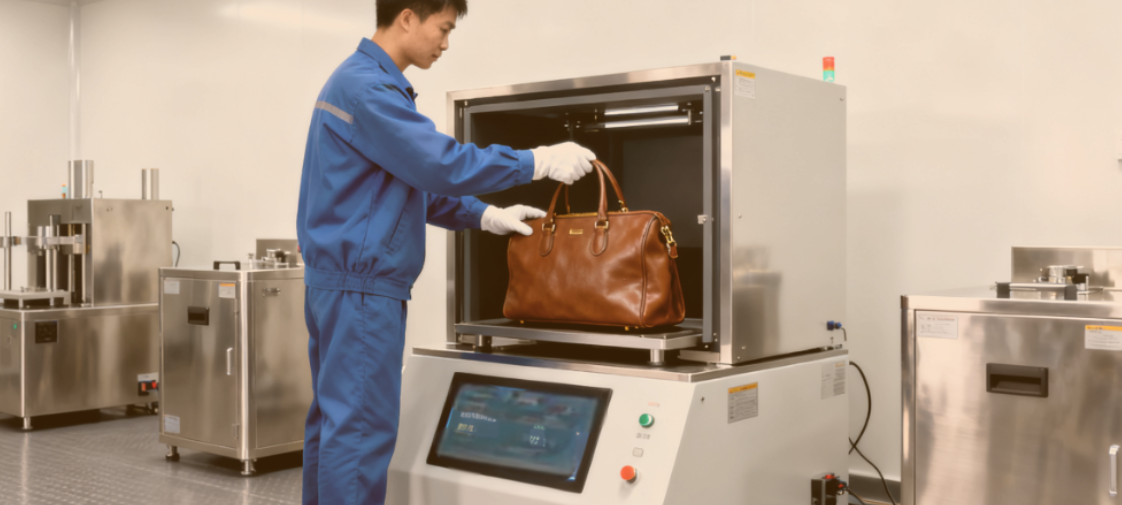
“A flawless leather bag starts with a perfect sample.”
What Is Sampling in Leather Bag Manufacturing
In leather bag production, sampling refers to the process of creating a prototype that reflects the final product’s design, material, and craftsmanship. It’s the bridge between concept and large-scale manufacturing. A precise sample helps brands and manufacturers verify that every specification—leather type, stitching, and finishing—meets expectations.
Purpose: To ensure all design details and production techniques are correct before entering mass production.
Trend: More global brands now require multiple pre-production samples to ensure consistent quality in OEM leather goods.
Why Sampling Is the Key to Leather Goods Quality Control
The sampling stage acts as the first line of defense in leather goods quality control. Identifying potential issues—such as uneven leather texture, inaccurate dimensions, or inconsistent stitching—saves both time and cost in later production. By addressing these details early, manufacturers can avoid waste, rework, and customer dissatisfaction.
Advantage: Early inspection ensures smoother production and fewer defects in bulk orders.
Example: If a leather messenger bag or leather laptop bag sample shows uneven color tones, adjustments can be made before mass production begins.
What Brands Usually Check During Bag Prototype Inspection
During bag prototype inspection, both the brand and manufacturer evaluate key aspects that define the quality and appearance of the product:
-
Leather Texture & Grain: Ensures natural consistency and premium feel.
-
Color Uniformity: Prevents visible tone differences on panels or straps.
-
Stitching & Seam Alignment: Checks for even tension and durability.
-
Edge Finishing: Confirms that the edges are smooth and professionally sealed.
-
Hardware Functionality: Tests zippers, buckles, and snap buttons for reliability.
Common Focus Items: For models such as brown leather bags, leather bucket bags, and vegan leather bags, these inspections ensure both functionality and refined aesthetics.
Conclusion of This Section
Sampling is not just a technical procedure—it’s a collaboration between the designer and the leather bag manufacturer to achieve perfection before production. Through detailed inspection and feedback, brands can confidently move forward knowing their final bags in leather will meet the highest quality standards.
Quality Checkpoint 1 – Leather Material Selection
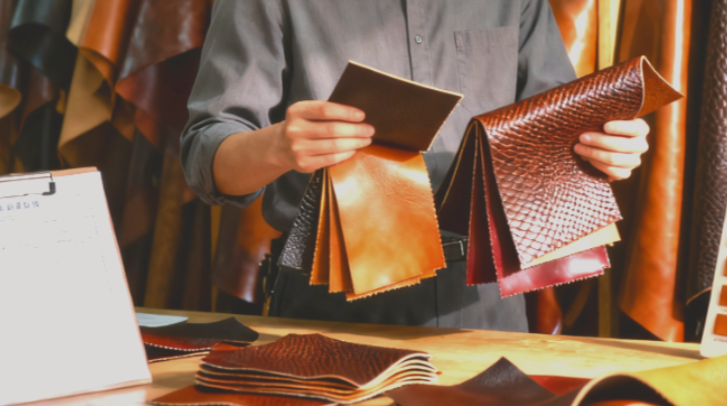
Leather material is the foundation of every high-quality bag. Selecting the right leather affects durability, texture, color consistency, and the overall feel of the finished product. At Sunteam, we source materials from our own tannery, testing every hide for touch, colorfastness, and uniformity. This careful leather selection ensures that each premium leather bag meets the highest standards for functionality and aesthetics.
Why Leather Material Matters
Choosing the correct leather type is not just about appearance—it impacts the bag’s longevity, flexibility, and how it responds to wear and tear. A poorly selected hide can lead to cracks, color fading, or uneven texture, which will compromise the overall quality of your leather tote bag, leather crossbody bag, or leather hobo bag.
Key Advantages of Professional Leather Selection
-
Ensures uniform texture and smooth grain across panels.
-
Guarantees consistent color for each production batch.
-
Enhances durability and resistance to abrasion.
-
Supports sustainable production practices by sourcing responsibly.
Popular Leather Types for Different Bags
-
Full-grain leather: Maximum durability, natural texture, ideal for leather shoulder bags and leather bucket bags.
-
Top-grain leather: Smooth and uniform, perfect for leather laptop bags and daily-use leather crossbody bags.
-
Vegan leather: Cruelty-free alternative with consistent color and finish.
Leather Material Inspection Table
|
Material / Feature |
Quality Benefit |
Testing Method |
Ideal Bag Type / Use Case |
|---|---|---|---|
|
Full-grain leather |
Durability, natural texture |
Touch, abrasion, colorfastness |
Leather tote bag, leather hobo bag |
|
Top-grain leather |
Smooth surface, even color |
Color consistency, flexibility |
Leather shoulder bag, leather laptop bag |
|
Vegetable-tanned leather |
Eco-friendly, ages gracefully |
Leather thickness, tanning test |
Leather bucket bag, leather messenger bag |
|
Vegan leather |
Cruelty-free, consistent finish |
Scratch resistance, colorfastness |
Vegan leather bags, fashion crossbody bags |
|
Exotic / specialty leather |
Unique texture and premium feel |
Grain inspection, color check |
Luxury leather bags, custom leather bags |
By carefully selecting and inspecting each type of leather, Sunteam ensures that every leather bag produced not only looks exquisite but also stands the test of time. Video or comparison images of different leather types can further illustrate the material differences for brands evaluating samples.
Quality Checkpoint 2 – Pattern Cutting Precision

Precision in leather cutting is essential for a well-proportioned, aesthetically pleasing leather bag. Each panel must be cut accurately according to the sample pattern, with clean, straight edges to ensure flawless assembly.
Why Pattern Cutting Matters
Accurate cutting impacts how the bag holds its shape, aligns seams, and accommodates hardware. Even a slight deviation can affect symmetry and compromise the finished product.
Advantages:
-
Ensures consistent dimensions for every batch.
-
Improves efficiency during assembly by reducing adjustment needs.
-
Supports precision craftsmanship and high-end product perception.
Ideal Use Cases:
-
Leather tote bags with multiple panels.
-
Structured leather messenger bags and leather crossbody bags.
Quality Checkpoint 3 – Stitching and Thread Quality
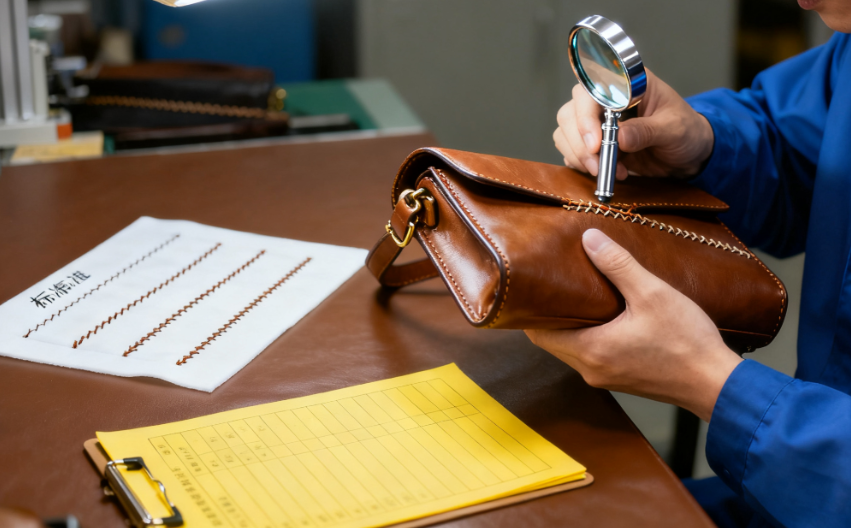
High-quality leather stitching ensures that a bag remains durable and visually refined. Every stitch should be uniform, with consistent tension and no skipped stitches.
Why Stitching Matters
Even minor inconsistencies can lead to premature wear or weakened seams. Both machine and hand stitching techniques are assessed to guarantee strength and aesthetic appeal.
Advantages:
-
Enhances leather bag durability.
-
Adds a premium handcrafted appearance.
-
Prevents seam splitting during long-term use.
Ideal Use Cases:
-
Everyday leather shoulder bags.
-
Travel-friendly leather duffle bags.
Quality Checkpoint 4 – Edge Painting and Finishing
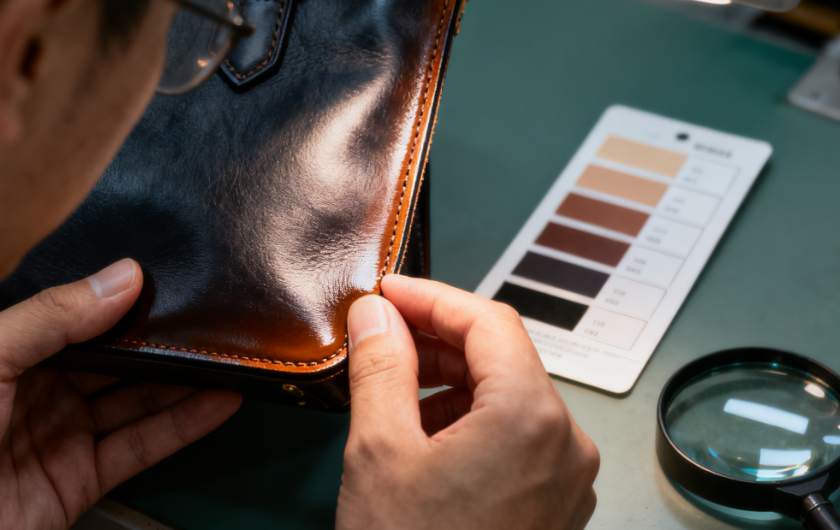
Edge painting and leather finishing are key details that elevate the bag’s luxury feel. Uniform edge color, smooth layers, and precise finishing demonstrate a commitment to quality.
Why Edge Finishing Matters
Poorly finished edges can peel or discolor over time, diminishing the bag’s overall look. Attention to detail signals a high-end leather bag to consumers.
Advantages:
-
Enhances aesthetic appeal and perceived value.
-
Protects edges from wear and tear.
-
Ensures consistency across multiple production batches.
Ideal Use Cases:
-
High-end leather tote bags.
-
Fashion leather bucket bags.
Quality Checkpoint 5 – Hardware and Accessories
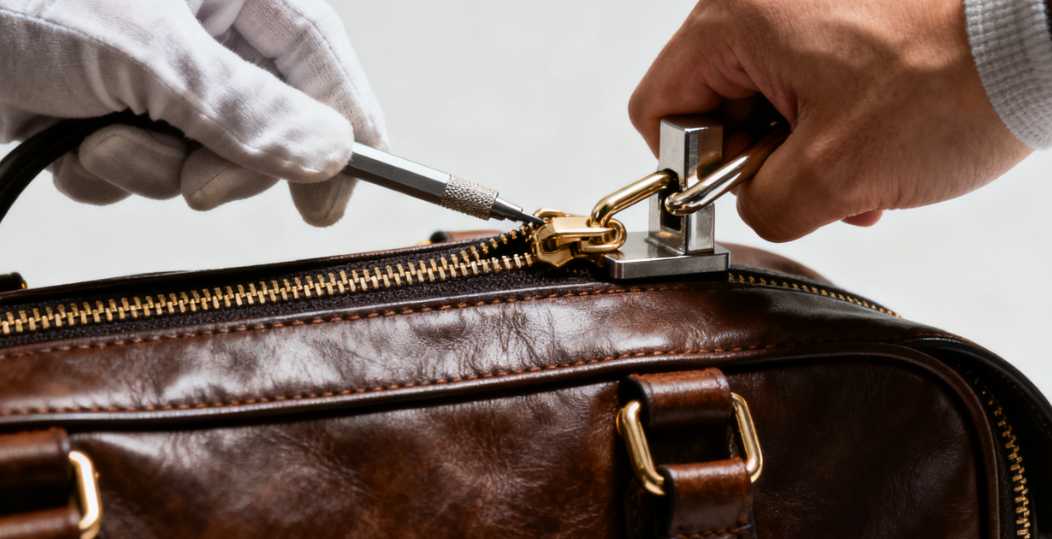
The functionality and appearance of zippers, buckles, and rivets are vital. Bag hardware quality must align with the bag’s design and leather type.
Why Hardware Matters
Hardware affects usability, durability, and the overall style of the leather bag. Poorly matched components can diminish both function and visual harmony.
Advantages:
-
Guarantees smooth operation of zippers and closures.
-
Strengthens load-bearing points.
-
Elevates design perception.
Ideal Use Cases:
-
Leather messenger bags with multiple compartments.
-
Leather crossbody bags with adjustable straps.
Quality Checkpoint 6 – Lining and Interior Construction
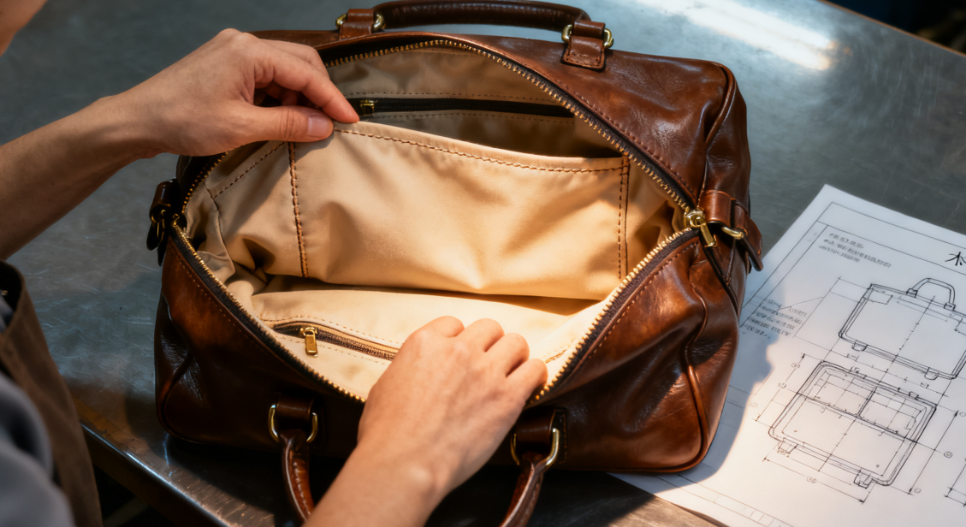
The interior structure of a bag is as important as its exterior. Leather bag lining must be smooth, seams secure, and compartments functional.
Why Lining Matters
Well-constructed interiors prevent deformation and improve user experience. Proper inner organization enhances durability and accessibility.
Advantages:
-
Maintains bag shape during use.
-
Protects contents from wear or damage.
-
Supports professional image and premium feel.
Ideal Use Cases:
-
Business leather laptop bags.
-
Travel leather duffle bags with multiple interior compartments.
Quality Checkpoint 7 – Final Inspection and Packaging
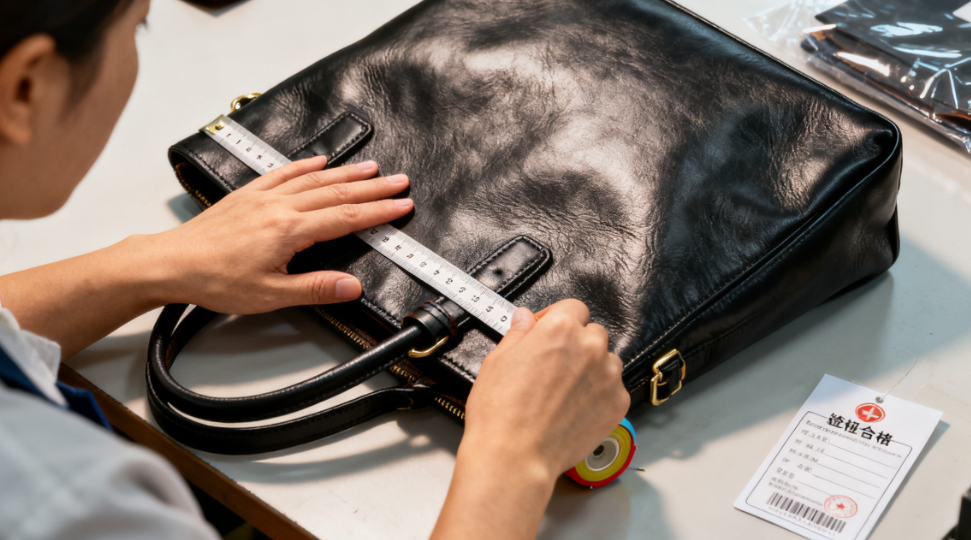
Before a sample leaves the factory, final quality inspection ensures every detail meets expectations. Dimensions, finishing, strap strength, and overall appearance are checked.
Why Final Inspection Matters
Packaging-ready inspection guarantees that clients receive a flawless product and prevents errors in shipment. High-quality packaging also reflects brand professionalism.
Advantages:
-
Confirms leather bag packaging quality.
-
Ensures ready-to-sell condition for B2B customers.
-
Prevents customer complaints and returns.
Ideal Use Cases:
-
All premium bags in leather for retail or wholesale.
Leather Bag Sampling Quality Checkpoints Summary Table
|
Checkpoint |
Focus Area / Feature |
Key Benefits |
Ideal Bag Type / Use Case |
|---|---|---|---|
|
Pattern Cutting Precision |
Panel accuracy, edge alignment |
Consistent shape, easier assembly |
Leather tote bags, messenger bags, crossbody bags |
|
Stitching and Thread Quality |
Stitch uniformity, tension |
Durability, premium look |
Leather shoulder bags, leather duffle bags |
|
Edge Painting and Finishing |
Edge color, smooth layers |
Luxury feel, edge protection |
Leather tote bags, leather bucket bags |
|
Hardware and Accessories |
Zippers, buckles, rivets |
Functionality, design harmony |
Leather messenger bags, crossbody bags |
|
Lining and Interior Construction |
Smooth lining, compartment layout |
Shape retention, content protection |
Leather laptop bags, travel duffle bags |
|
Final Inspection and Packaging |
Overall appearance, strap testing |
Ready-to-sell quality, brand professionalism |
Bags in leather, OEM leather bags |
Conclusion
The sampling stage is more than a procedural step—it defines your brand’s reputation and builds trust with your customers. Every leather bag that passes through meticulous inspection reflects Sunteam’s commitment to precision, durability, and aesthetic excellence.
With a rigorous OEM/ODM leather bag workflow, Sunteam ensures that every prototype and production piece meets the highest standards of craftsmanship and quality. From leather selection to final inspection and packaging, our process guarantees consistency and reliability in every product.
For brands seeking a reliable leather bag manufacturer, contact Sunteam today to start your next custom project with confidence, knowing your designs will be brought to life with precision and care.

